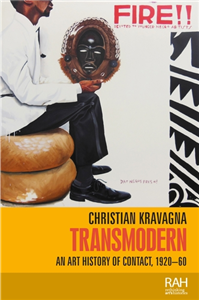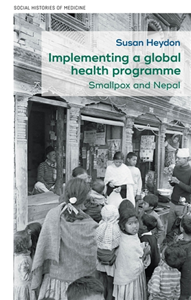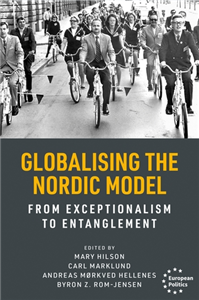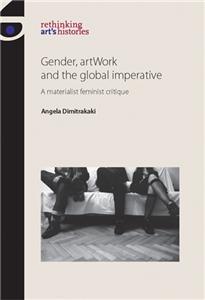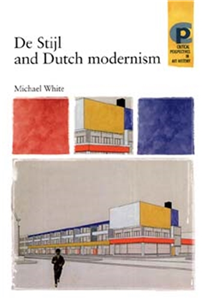Your Search Results
-
Global Collective Publishers
Global Collective Publishers, based in Philadelphia, Pennsylvania, is an independent publisher whose mission is to provide a platform for voices from around the world, crossing the borders of language, culture, religion, and gender, and to create a space where diverse communities can share and exchange stories that express their individual and shared sense of humanity through a variety of literary genres in fiction and non-fiction. In a world that feels increasingly more alienating, it is our aim to work towards dispelling the fear of the other and stand against literature of hatred, embracing the shared human experience in its myriad textures and voices through a curiosity-driven life. Global Collective is committed to publishing across a diverse landscape of fiction and non-fiction, in the areas of religion and spirituality, personal growth and self-transformation, gender and LGBT+ studies, social awareness, art and cinema. Global Collective takes to heart Booker Prize winner Ben Okri’s assertion that “stories can conquer fear… they can make the heart bigger.”Global Collective Publishers seeks unique and extraordinary literature that satiates our desire to gain a deeper understanding of the world around us and to discover points of commonality amongst our differences where words have no borders.
View Rights Portal
-
Promoted ContentJune 2010
Kinder in Deutschland 2010
2. World Vision Kinderstudie
by Herausgegeben von World Vision Deutschland e.V., World
-
Promoted ContentNovember 2007
Kinder in Deutschland 2007
1. World Vision Kinderstudie
by Herausgegeben von World Vision Deutschland e.V.
-
 Trusted Partner
January 1983
Trusted Partner
January 1983Der Naturgarten
Mehr Platz für einheimische Pflanzen und Tiere
by Schwarz, Urs / Vorwort von Stern, Horst; Herausgegeben von World Wildlife Fund
-
 Trusted Partner
May 2015
Trusted Partner
May 2015Globale Trends 2015
Perspektiven für die Weltgesellschaft
by Herausgegeben von Stiftung Entwicklung und Frieden; Herausgegeben von Käte Hamburger Kolleg / Centre for Global Cooperation Research
-
 Trusted Partner
The ArtsJanuary 2024
Trusted Partner
The ArtsJanuary 2024Transmodern
An art history of contact, 1920–60
by Christian Kravagna,
How can we reconfigure our picture of modern art after the postcolonial turn without simply adding regional art histories to the Eurocentric canon? Transmodern examines the global dimension of modern art by tracing the crossroads of different modernisms in Asia, Europe and the Americas. Featuring case studies in Indian modernism, the Harlem Renaissance and post-war abstraction, it demonstrates the significance of transcultural contacts between artists from both sides of the colonial divide. The book argues for the need to study non-western avant-gardes and Black avant-gardes within the west as transmodern counter-currents to mainstream modernism. It situates transcultural art practices from the 1920s to the 1960s within the framework of anti-colonial movements and in relation to contemporary transcultural thinking that challenged colonial concepts of race and culture with notions of syncretism and hybridity.
-
 Trusted Partner
The ArtsJune 2022
Trusted Partner
The ArtsJune 2022Transmodern
An art history of contact, 1920–60
by Christian Kravagna, Marsha Meskimmon, Amelia Jones,
How can we reconfigure our picture of modern art after the postcolonial turn without simply adding regional art histories to the Eurocentric canon? Transmodern examines the global dimension of modern art by tracing the crossroads of different modernisms in Asia, Europe and the Americas. Featuring case studies in Indian modernism, the Harlem Renaissance and post-war abstraction, it demonstrates the significance of transcultural contacts between artists from both sides of the colonial divide. The book argues for the need to study non-western avant-gardes and Black avant-gardes within the west as transmodern counter-currents to mainstream modernism. It situates transcultural art practices from the 1920s to the 1960s within the framework of anti-colonial movements and in relation to contemporary transcultural thinking that challenged colonial concepts of race and culture with notions of syncretism and hybridity.
-
 Trusted Partner
The ArtsJune 2022
Trusted Partner
The ArtsJune 2022Transmodern
An art history of contact, 1920–60
by Christian Kravagna, Marsha Meskimmon, Amelia Jones,
How can we reconfigure our picture of modern art after the postcolonial turn without simply adding regional art histories to the Eurocentric canon? Transmodern examines the global dimension of modern art by tracing the crossroads of different modernisms in Asia, Europe and the Americas. Featuring case studies in Indian modernism, the Harlem Renaissance and post-war abstraction, it demonstrates the significance of transcultural contacts between artists from both sides of the colonial divide. The book argues for the need to study non-western avant-gardes and Black avant-gardes within the west as transmodern counter-currents to mainstream modernism. It situates transcultural art practices from the 1920s to the 1960s within the framework of anti-colonial movements and in relation to contemporary transcultural thinking that challenged colonial concepts of race and culture with notions of syncretism and hybridity.
-
 Trusted Partner
The ArtsJune 2022
Trusted Partner
The ArtsJune 2022Transmodern
An art history of contact, 1920–60
by Christian Kravagna, Marsha Meskimmon, Amelia Jones,
How can we reconfigure our picture of modern art after the postcolonial turn without simply adding regional art histories to the Eurocentric canon? Transmodern examines the global dimension of modern art by tracing the crossroads of different modernisms in Asia, Europe and the Americas. Featuring case studies in Indian modernism, the Harlem Renaissance and post-war abstraction, it demonstrates the significance of transcultural contacts between artists from both sides of the colonial divide. The book argues for the need to study non-western avant-gardes and Black avant-gardes within the west as transmodern counter-currents to mainstream modernism. It situates transcultural art practices from the 1920s to the 1960s within the framework of anti-colonial movements and in relation to contemporary transcultural thinking that challenged colonial concepts of race and culture with notions of syncretism and hybridity.
-
 Trusted Partner
MedicineFebruary 2025
Trusted Partner
MedicineFebruary 2025Implementing a global health programme
Smallpox and Nepal
by Susan Heydon
Worldwide eradication of the devastating viral disease of smallpox was devised as a distant global policy, but success depended on implementing a global vaccination programme within nation states. How this was achieved remains relevant and topical for responding to today's global communicable disease challenges. The small and poor Himalayan kingdom of Nepal faced enormous geographical and infrastructure challenges if it was going to succeed in a nationwide vaccination programme. This book acknowledges the key role of the WHO but disrupts the top-down, centre-led standard narrative. Against a background of widespread internal political and social change, Nepal's programme was expanded, effectively decentralised and a vaccination strategy introduced that aligned with people's beliefs. Few foreign personnel were involved.
-
 Trusted Partner
Humanities & Social SciencesOctober 2020
Trusted Partner
Humanities & Social SciencesOctober 2020A global history of early modern violence
by Erica Charters, Marie Houllemare, Peter H. Wilson
-
 Trusted Partner
Humanities & Social SciencesApril 2022
Trusted Partner
Humanities & Social SciencesApril 2022Russian grand strategy in the era of global power competition
by Andrew Monaghan, Richard Connolly
-
 Trusted Partner
Humanities & Social SciencesFebruary 2025
Trusted Partner
Humanities & Social SciencesFebruary 2025Global counter-terrorism
by Tahir Abbas, Sylvia I. Bergh, Sagnik Dutta
This collection aims to inaugurate a new direction in research on counterterrorism by exploring global connections - both in terms of practices and discourses, as well as shared ideas and epistemes - that animate counterterrorism practices. The chapters - grouped under the themes of postcoloniality and coloniality, and entanglements of the transnational and the local, and counterterrorism and right-wing extremism - are attentive to global connections and are mindful of the complexities of global historical processes that constitute the politics of counterterrorism. This book aims to bring together scholars studying counterterrorism in the global North and the global South to explore convergence and divergence in how counterterrorism policies function in a range of national and local contexts.
-
 Trusted Partner
The ArtsOctober 2023
Trusted Partner
The ArtsOctober 2023Windows for the world
Nineteenth-century stained glass and the international exhibitions, 1851–1900
by Jasmine Allen
Windows for the world explores the display and reception of nineteenth-century British stained glass in a secular exhibition context. International in scope, the book focuses on the global development of stained glass in this period as showcased at, and influenced by, these exhibitions. It recognises those who made and exhibited stained glass and demonstrates the long-lasting impact of the classification and modes of display at these events. A number of exhibits are illustrated in colour and are analysed in relation to stylistic developments, techniques and material innovations, as well as the broader iconographies of nation and empire in the nineteenth century.
-
 Trusted Partner
The ArtsSeptember 2015
Trusted Partner
The ArtsSeptember 2015Film modernism
by Sam Rohdie
This book is at once a detailed study of a range of individual filmmakers and a study of the modernism in which they are situated. It consists of fifty categories arranged in alphabetical order, among which are allegory, bricolage, classicism, contradiction, desire, destructuring and writing. Each category, though autonomous, interacts, intersects and juxtaposes with the others, entering into a dialogue with them and in so doing creates connections, illuminations, associations and rhymes which may not have arisen in a more conventional framework. The author refers to particular films and directors that raise questions related to modernism, and, inevitably, thereby to classicism. Jean-Luc Godard's work is at the centre of the book, though it spreads out, evokes and echoes other filmmakers and their work, including the films of Michelangelo Antonioni, Bernardo Bertolucci, John Ford, Howard Hawks, Alfred Hitchcock, João César Monteiro, Pier Paolo Pasolini and Orson Welles. This innovative and eloquently written text book will be an essential resource for all film students. ;
-
 Trusted Partner
Humanities & Social SciencesMarch 2026
Trusted Partner
Humanities & Social SciencesMarch 2026Globalising the Nordic Model
From exceptionalism to entanglement
by Mary Hilson
The five Nordic countries - Denmark, Finland, Iceland, Norway and Sweden - frequently attract attention as examples of a 'Nordic model'. The meanings of the term vary, but especially since the global financial crisis of 2008-9 the Nordic countries have often been portrayed positively, as examples of economic dynamism, innovation and social equality. Studies of these images of the Nordic countries and Nordic region and their international circulations are now a well-established field of research. This volume explores how the Nordic model has been shaped by global entanglements, in exchange not only with Western Europe and North America, but also with the Global South. Drawing on selected case studies, the volume offers new perspectives on the meanings of the Nordic model and Nordic exceptionalism in a global context during the half century since c. 1970.
-
 Trusted Partner
Politics & governmentFebruary 2013
Trusted Partner
Politics & governmentFebruary 2013Shaping a global women's agenda
Women's NGOs and global governance, 1925–85
by Karen Garner
Available in paperback for the first time, and drawing on a wide range of archival sources, Shaping a global women's agenda documents international women's history through the lens of the long-established Western-led international organisations that defined and dominated women's involvement in global politics from the 1925 founding of the Joint Standing Committee of Women's International Organisations up through the UN Decade for Women (1976-85). Documenting specific global campaigns in episodes that span the twentieth century, Garner includes biographical information about lesser known international leaders as she discusses important historic debates regarding feminist goals and strategies among women from the East and West, North and South. This interdisciplinary study addresses questions of interest to historians, political scientists, international relations scholars, sociologists, and feminist scholars and activists whose work promotes women's and human rights.
-
 Trusted Partner
The ArtsOctober 2013
Trusted Partner
The ArtsOctober 2013Gender, artWork and the global imperative
A materialist feminist critique
by Angela Dimitrakaki
Is gender implicated in how art does its work in the world created by global capital? Is a global imperative exclusive to capital's planetary expansion or also witnessed in oppositional practices in art and curating? And what is new in the gendered paradigms of art after the fall of the Berlin Wall? Angela Dimitrakaki addresses these questions in an insightful and highly original analysis of travel as artistic labour, the sexualisation of migration as a relationship between Eastern and Western Europe, the rise of female collectives, masculinity and globalisation's 'bad boys', the emergence of a gendered economic subject that has dethroned postmodernism, and the need for a renewed materialist feminism. This is a theoretically astute overview of developments in art and its contexts since the 1990s and the first study to attempt a critical refocusing of feminist politics in art history in the wake of globalisation. It will be essential reading in art history, gender, feminist and globalisation studies, curatorial theory, cultural studies and beyond. ;
-
 Trusted Partner
Humanities & Social SciencesJuly 2010
Trusted Partner
Humanities & Social SciencesJuly 2010Shaping a global women's agenda: women's NGOs and global governance, 1925–85
by Karen Garner
Drawing on a wide range of archival sources, Karen Garner documents international women's history through the lens of the long-established Western-led international organisations that defined and dominated women's involvement in global politics from the 1925 founding of the Joint Standing Committee of Women's International Organisations up through the UN Decade for Women (1976-85). Documenting specific global campaigns in episodes that span the twentieth century, Garner includes biographical information about lesser known international leaders as she discusses important historic debates regarding feminist goals and strategies among women from the East and West, North and South. This interdisciplinary study addresses questions of interest to historians, political scientists, international relations scholars, sociologists, and feminist scholars and activists whose work promotes women's and human rights. ;
-
 Trusted Partner
Sociology: sport & leisureFebruary 2017
Trusted Partner
Sociology: sport & leisureFebruary 2017Localizing global sport for development
by Iain Lindsey. Series edited by John Horne
This jointly authored book extends understanding of the use of sport to address global development agendas by offering an important departure from prevailing theoretical and methodological approaches in the field. Drawing on nearly a decade of wide-ranging multidisciplinary research undertaken with young people and adults living and working in urban communities in Zambia, the book presents a localised account that locates sport for development in historical, political, economic and social context. A key feature of the book is its detailed examination of the lives, experiences and responses of young people involved in sport for development activities, drawn from their own accounts. The book's unique approach and content will be highly relevant to academic researchers and post-graduate students studying sport and development in across many different contexts.
-
 Trusted Partner
Humanities & Social SciencesJuly 2003
Trusted Partner
Humanities & Social SciencesJuly 2003De Stijl and Dutch modernism
by Michael White, Marsha Meskimmon, Shearer West, Tim Barringer
De Stijl was the title of a magazine founded in the Netherlands in 1917 and is now used to identify the abstract art and functional architecture of its major contributors: Mondrian, Van Doesburg, Van der Leck, Oud, Wils and Rietveld. This book is the first to emphasize the local context of De Stijl and explore its relationship to the distinctive character of Dutch modernism. Examines the connection between debates concerning abstraction in painting and spatiality in architecture and contemporary developments in the fields of urban planning, advertising, interior design and exhibition design. Describes the interaction between the world of mass culture and the fine arts. ;











